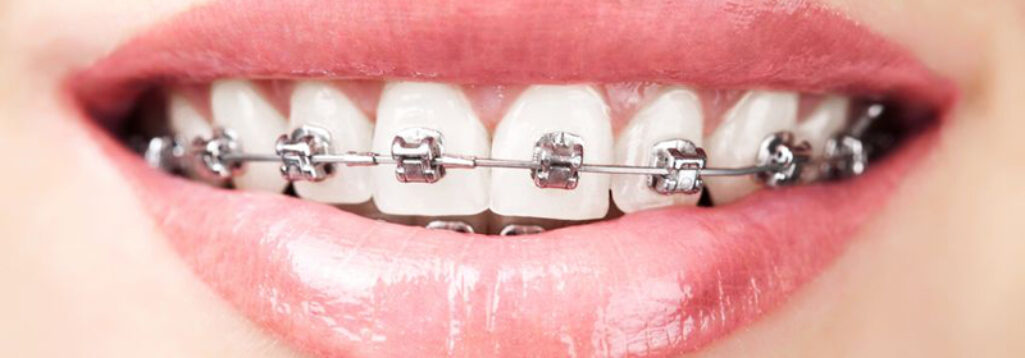
|

|

|

|

How to find out if your child needs braces
Studies have shown that almost 75% of children require some type of dental procedure to help correct certain dental issues during their growing years. As a parent, it is important to look for any dental problems your children might have and try and correct them as early as possible.
If regular dental check-ups are done, then usually any potential problems can be caught and corrected early. By the time a child is around 7 years of age, they should go for a dental consultation to check if the teeth are growing in correctly. This will help check the course of dental development and if anything needs to be corrected, the necessary steps can be initiated.
Common signs your child needs braces
One of the most common signs that your child needs braces is if their teeth and/or jaw are not growing at a normal rate or in a healthy way. Depending on the severity of the issues, it might be necessary to consult with your dentist and orthodontist to commence treatment.
If you notice that the child’s the upper jaw is not growing in parallel with the lower jaw, you should consult your dentist immediately because it means that your child’s top teeth will continue to move forward.
The following are some other common signs that your child may need braces. If you notice any, consult a dentist at the earliest.
1, Speech difficulties
One of the first indicators of improper dental development is that the parent will be able to tell that the speech isn’t right. You may notice that the youngster is unable to pronounce words that his/her peers can.
The speech may be slurred, and they may struggle to pronounce certain words. They are unable to pronounce these words correctly, especially those including S and R. This is due to incorrect tooth positioning, with some leaning in or out of other neighbouring teeth.
Dental/orthodontic treatment may assist the jaw development and accommodate the adult teeth when they arrive. This will aid in achieving a proper teeth alignment. Later braces will ensure that all of the teeth are properly positioned, and speech issues should be gone.
2, Crooked teeth
When the youngster smiles, his or her crooked teeth are apparent. When two or more teeth overlap one another and appear to be crowded, there is not enough room in the mouth and the teeth are pushed toward each other.
There are a variety of causes for this. Some people may have hereditary reasons, while others may have acquired habits such as thumb sucking or mouth breathing. When children suck their thumbs, the teeth are slowly moved away from their correct positions. Their problems with bite include teeth that stick out from the mouth, and jaws not covered by the lips.
Some children have issues with the jaws not meeting on either side. If the overbite/under bite issues are severe and cannot be corrected even with the child getting rid of their habits, braces will help. The bite issues and jaw alignment will be corrected after using braces.
3, Irregularity in baby teeth falling
For most children, the baby teeth fall by the time they are 12 years old. But for some, the baby teeth may not fall on time. What this means is the baby teeth will still be there when the adult teeth make their appearance. This would mean both the teeth fighting for space and overlapping and overcrowding of the teeth.
To make room for adult teeth, some toddlers need to have their baby teeth removed. Braces can be used to correct the alignment of teeth and the dentist will decide if any of them must be removed to ensure a full set of teeth that is not crowding. Occasionally, children have too many teeth, which necessitates tooth extraction for proper alignment and jaw positioning.
4, Discomfort while consuming food
Children’s eating habits are an excellent indicator of teeth alignment. When teeth are misaligned, chewing food puts added strain on them, causing discomfort and pain. Children with misaligned jaws also exhibit these symptoms.
Children are unable to chew food carefully enough, especially hard foods, and thus avoid it completely. A picky eater may be seen when the situation is severe. Some youngsters stop chewing food because they find it unpleasant. Nutrition issues can also be detected in a youngster as a result of this. Braces can help children who have misaligned jaws and teeth.
Nip problems in the bud
When a child receives regular dental checkups, the dentist may be able to detect underlying health concerns. In some youngsters, tooth grinding might cause sleep problems. Braces are sometimes needed to correct this behaviour, but in some situations additional assistance is required because it can also affect jaw position. Teeth that are too congested or have insufficient gap between them will need braces to correct them.
Teeth have a specific position in the mouth that must be maintained. When this is disturbed, braces will aid in moving the teeth into the right place. There is no ideal age to get treatment. It varies based on each youngster and his or her problems.
Some dentists feel that therapy should begin at nine years of age when baby teeth and adult teeth have emerged. This is the time to establish a solid foundation for adult teeth. Some individuals prefer to defer treatment till all of the adult teeth have come in, when they can assess the situation more accurately. The child’s condition determines each treatment approach.
There are several types of braces accessible for youngsters. Some are removable devices, which are often perfect for small children. These gadgets may be removed by parents, who can assist them in cleaning the device.
Maintaining good oral health is critical through childhood, else adult dental health can be affected. The particular braces used are also determined by the child – whether he/she can take care of them. During the course of wearing braces (most therapy lasts about a year), any concerns that may arise during the period must be resolved immediately to ensure excellent results.






